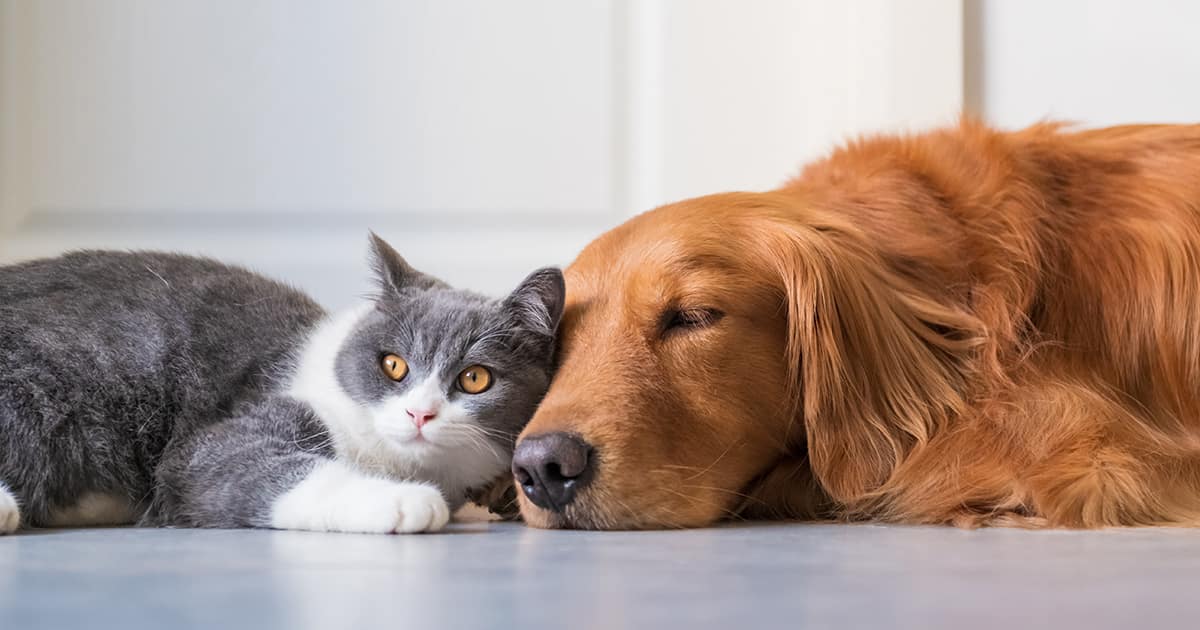How to Protect Pets from Heat

The summer heat can be as uncomfortable and dangerous for your pets as it is for you. High temperatures and humidity can make caring for your pets a challenge.
Here are some tips for protecting pets from the heat.
Summer safety tips for pets
Here are some basic tips for keeping your pets safe in the summer.
Never leave your pets in the car
Do not leave your pet in the car, not even with the air conditioner on. The temperature in a parked car can rise quickly and on a 30-degree day, a car with the windows rolled down a little can reach up to 39 degrees Celsius in 10 minutes. After half an hour, the temperature can reach over 48 degrees. This can cause irreversible organ damage or death.
Limit exercise
On hot days, limit your pet’s exercise to morning and evening hours and be extra cautious if your pet has white ears because they are more prone to skin cancer. Pets with short noses may have breathing problems and are more susceptible to heat. Avoid walking your dog on asphalt and carry water with you to keep them hydrated.
Provide water and shade
If your pet is outside, make sure they have lots of shade and fresh water. Add ice to water during heat waves. Tarps and trees are a good way for your pet to get shade, but dog houses are not because they trap heat.
Be aware of humidity
Animals pant to cool down and are unable to keep themselves cool if the humidity is too high and their body temperature can reach dangerous levels quickly. Take your pet’s temperature and treat them for heat stroke if it is too high.
- A dog’s temperature should be between 37.5 and 39.2 degrees.
- A cat’s temperature should be between 37.2 and 39.2 degrees.
- A rabbit’s temperature should be between 38.3 and 39.4 degrees.
Do not rely on fans
Fans do not cool pets off effectively, so do not count on them to keep your pets comfortable. For example, dogs sweat mainly through their feet and a fan will not keep them cool.
Keep your pet cool
Always provide water and make some pupsicles (dog popsicles). Wrap your pet in a cooling vest, mat, or wrap, and if your dog likes baths, give them a cool soak on a hot day.
Watch for heatstroke
High temperatures can cause your pet to get heatstroke. Signs of heatstroke include:
- Heavy panting
- Rapid heartbeat
- Glazed eyes
- Excessive thirst
- Difficulty breathing
- Fever
- Dizziness
- A purple or deep red tongue
- Lethargy
- Salivation
- Lack of coordination
- Vomiting
- Seizure
- Unconsciousness
If your pet has heatstroke, move them to a shady area, apply cold towels on their neck, head, and chest, or run cool, but not cold, water over them. Offer them a small amount of water or lick ice cubes and take them to a vet immediately.
Tips for keeping dogs safe in the heat
- Keep your dog hydrated.
- Only walk your dog when it is cool outside, not during the hottest part of the day.
- Ask your vet if you should shave your dog in the summer. This is a good idea for some dogs but not others. Their fur may provide protection from the sun and insects.
- Do not let your dog get sunburn.
Tips for keeping cats safe in the heat
- Keep your cat hydrated by feeding them wet food instead of dry and adding ice cubes to their water dish.
- Close blinds and curtains during the day.
- Brush your cat to help them regulate their body temperature better.
- Do not let your cat outside during the hottest part of the day.
- Overweight cats have a harder time wit the heat, so put them on a diet.
- Do not let your cat get too much sun so they do not get sunburn.
Tips for keeping rabbits safe in the heat
- Rabbits can overheat easily, so keep your rabbit in a cold room that has tiles and is around 20 degrees. Avoid carpet and leave places where your rabbit can stretch out on the floor. The basement is an ideal place for your rabbit to spend hot days.
- Give your rabbit fresh veggies and cool, but not cold, water.
- Spray room temperature water on your rabbit or wet their ears.



